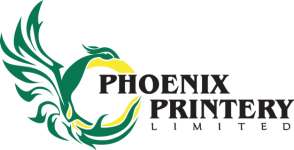Frequently Asked Questions
- WE DO NOT ACCEPT GIF IMAGES
- ALWAYS FOLLOW UP AN EMAIL WITH A PHONE CALL.
- IF YOU ARE NOT SURE, ALWAYS ASK
- EVERYTHING TAKES TIME, ORDER WITH AT LEAST TWO DAYS BEFORE DEADLINE.
- ALWAYS CHECK YOUR ORDER FOR ERRORS BEFORE YOU SEND IT, & AS SOON AS YOU RECEIVE IT.
We print from high-resolution (hi-res) or print-ready PDF documents. If you have any questions about the file format, please contact your sales rep.
We require a minimum 300 dpi (dots per inch) resolution for any photo that will be printed. The higher the resolution, the better the finished quality will be.
You need to apply a 1/8″ bleed when a graphic or background goes all the way to the end of the paper to prevent any problems when the paper is trimmed.
Quantity is normally the main deciding factor second only to deadlines. More cost effective on larger and longer runs Better for specific pantone colours. DIGITAL: More cost effective for short runs The preferred choice for short deadlines When the job uses variable data.
The Perfect file is a PDF (flattened.) Create/output the PDF as a high resolution and high quality file. Make sure that all graphics are either grayscale or CMYK images. Make sure that black type is really black and not made up of RGB or CMYK. If the document contains drop shadows or uses transparency, then it the file needs to be “flattened”.
When designing digital files intended for commercial offset printing, it is essential that all of the photographs and images in your in files are at least 300 dots per inch (DPI). If you have ever seen printed material that contains blurry or blocky images, it was likely caused by incorporating low-resolution images.
CMYK (an acronym for Cyan, Magenta, Yellow, Black) designates the color model usually employed in printing technology which uses the basic colors cyan, magenta and yellow. The fourth “color” is black, which is used to ensure a visually satisfying black tone.
In the computer-to-plate process, data from the computer is imaged directly onto the printing plate, without using film as a transference medium. This reduces costs, but the printing foils used in this process wear out faster than conventional printing plates and may need to be replaced on a periodic basis. What is more, depending on the process, the foils cannot always be stored once they have been printed. Recently, new materials, which use thermal energy instead of visible light for imaging purposes, have made it possible to process film in daylight conditions and to develop film without using chemicals.
A dieline is used in graphic design as a placeholder for assisting in the proper layout of a document that will be diecut as part of the finishing process. It is usually placed into the graphic’s computer file as a separate layer for sizing and orientation purposes. A dieline is usually not printed on the final piece but is used to determine correct layout.
In printing, the term “finishing” is used to cover the operations that take place after the actual print run and lead to the finished printed product. Depending on the type of product, this includes folding, collating and trimming of the printed sheets, as well as binding and possibly also packing.
JPEG is a common method, developed by the Joint Photographic Experts Group, for compressing image files in RGB mode. It can reduce the file size by up to 95 percent. It involves a loss of image information, although the degree of compression can be selected such that these losses remain within acceptable limits.
PDF is the abbreviation for what is known as the Portable Document Format. Developed by software manufacturer Adobe Systems Inc. in the USA, this data format is used for exchanging and processing electronically stored, formatted documents with text and images, independently of the hardware and software used. One of the special features is that texts and graphics are stored in vector form, meaning that the resolution of their representation is dependently solely on the output device (monitor, printer). PDF files can generally by recognized by the “.pdf” file name suffix. They can be created using the Adobe Acrobat program. The Acrobat Reader is available free for displaying and printing PDF files.
